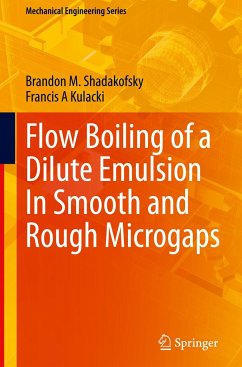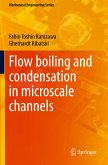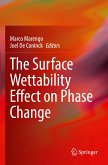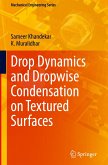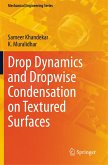This book elucidates heat transfer behavior for boiling of dilute emulsions- mixtures of two immiscible fluids- which has received little attention to date. Of the work completed in this area, the majority has been focused on pool boiling where no mean flow is present, and this book is the first major work to be published regarding flow boiling of emulsions. The book includes a comprehensive review and assessment of research on emulsion-based heat transfer. Recent experiments are reported and analyzed to characterize heat transfer in microgap flow boiling via a systematic investigation into the effects of gap size, mass flux, and volume fraction on the heat transfer coefficient and pressure drop. The emulsion used in all experiments comprises droplets of an immiscible electronics cooling fluid suspended in water. The volume provides a complete baseline for flow boiling of water in the microgaps, enabling a determination of the enhancement of the heat transfer coefficient when thedisperse component is present. Moreover, a subset of the data set pertains to flow boiling of dilute emulsions over microporous surfaces. The flow conditions for which the microporous surfaces enhance or degrade heat transfer are presented. Finally, this book provides a discussion of the physical phenomena which affect boiling and a set of nondimensional numbers that can be used for correlation.
Bitte wählen Sie Ihr Anliegen aus.
Rechnungen
Retourenschein anfordern
Bestellstatus
Storno

